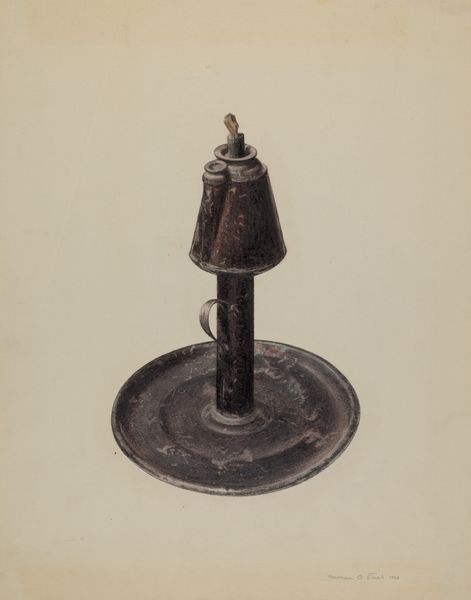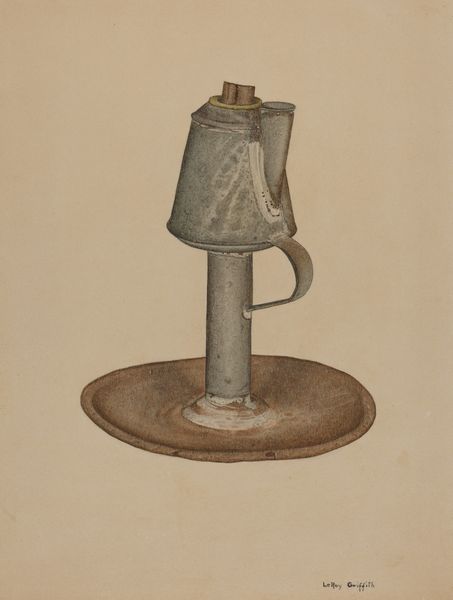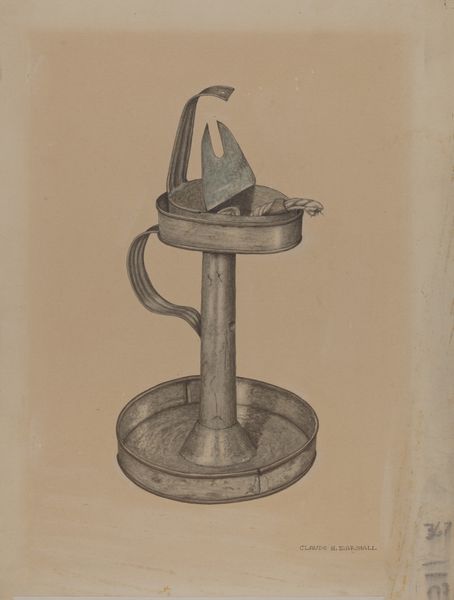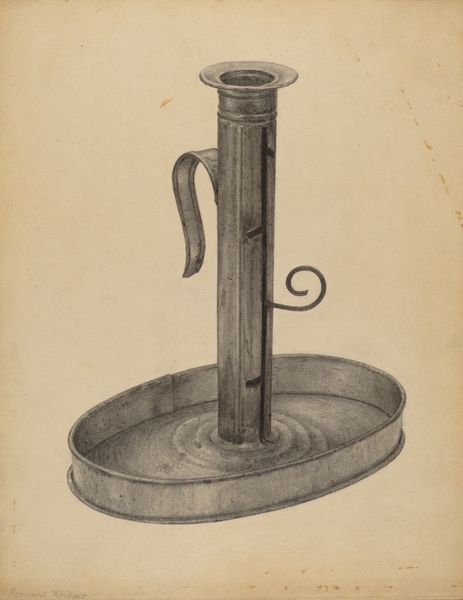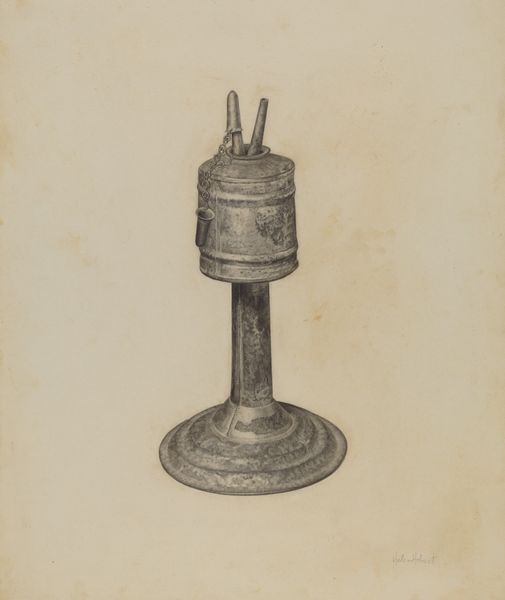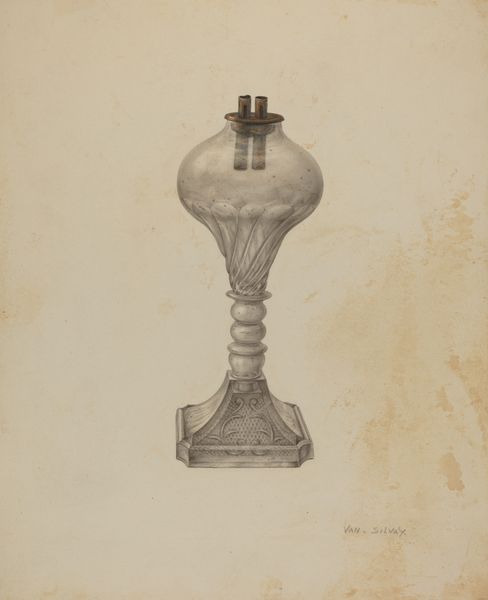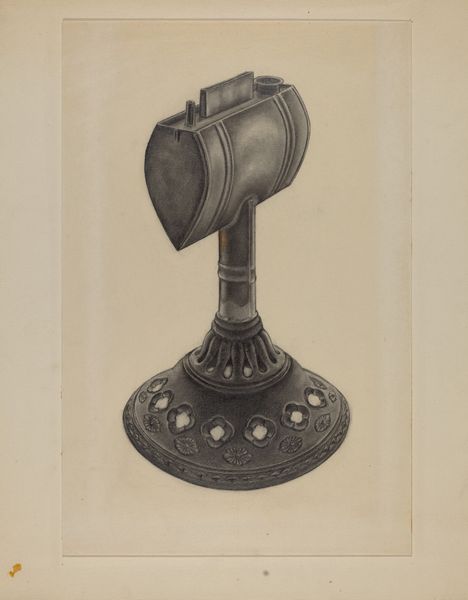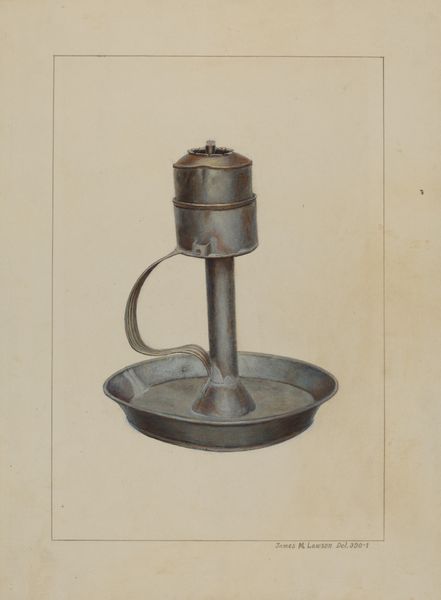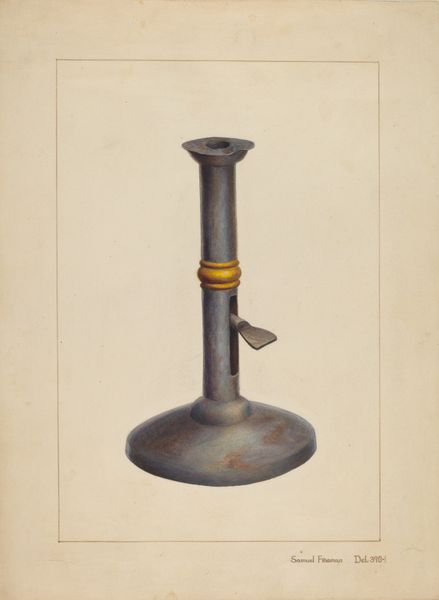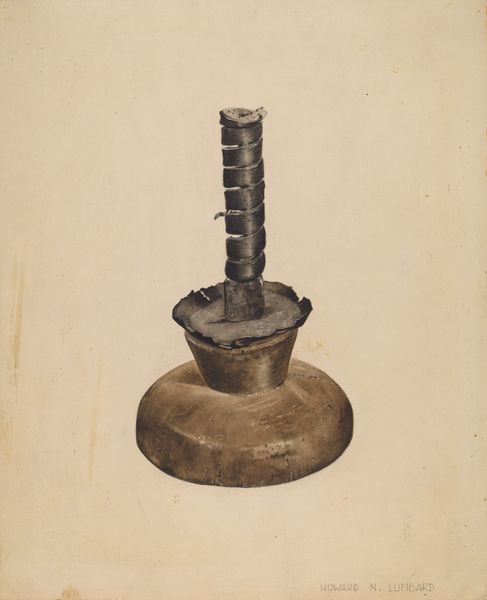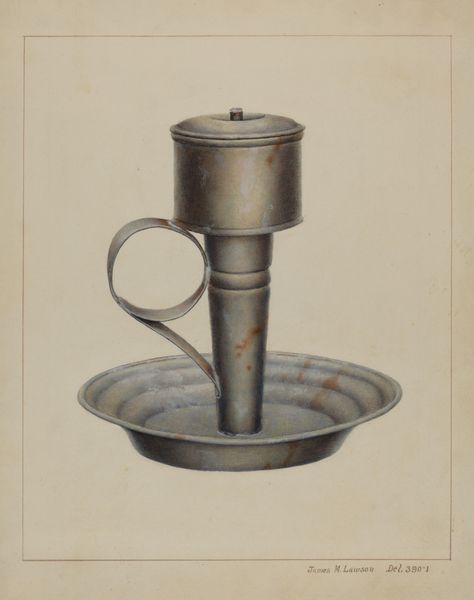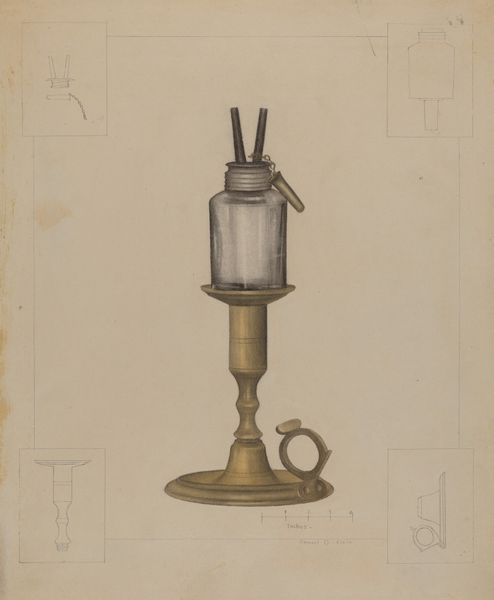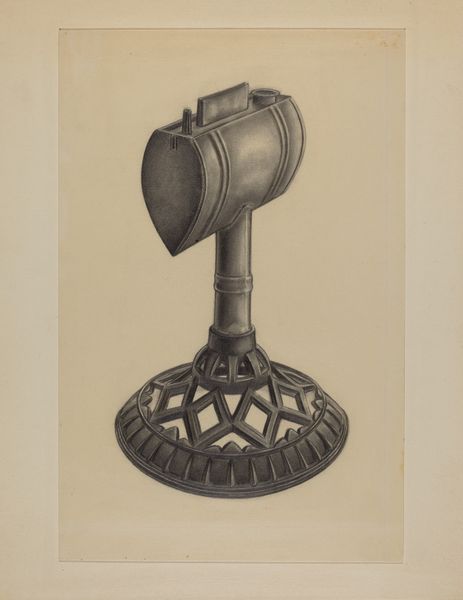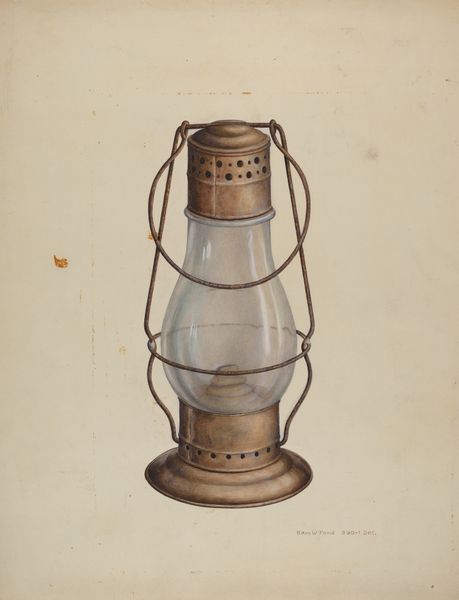
drawing, watercolor
#
drawing
#
watercolor
#
watercolour illustration
#
watercolor
Dimensions: overall: 27.9 x 22.9 cm (11 x 9 in.)
Copyright: National Gallery of Art: CC0 1.0
Editor: This is William Frank's "Colonial Lamp," created in 1938 using watercolor and drawing techniques. It depicts an old lamp, seemingly made of tarnished metal. There's a kind of quiet dignity in it, but also maybe a touch of melancholy. What historical narratives do you see reflected in this unassuming image? Curator: That "quiet dignity" is interesting, isn’t it? In 1938, a work like this would participate in a very specific kind of cultural work. Consider the date. The Colonial Revival was going strong. It idealized a simplified past, often downplaying the complex realities of colonial life, including its social inequalities and impact on indigenous populations. So, the question becomes: what exactly is this lamp *illuminating*, figuratively? Is it just a piece of history, or a symbol employed in a broader cultural narrative? Editor: So, the seemingly neutral act of painting this lamp is actually participating in a selective view of history? Curator: Precisely. Notice how it's presented: isolated, devoid of context, yet carefully rendered. This emphasis on craft and simple utility served to legitimize particular values associated with the Colonial era - self-reliance, industry - all carefully curated for a 20th-century audience during a time of great economic and social change. It suggests a usable past, readily available for a nation grappling with its identity. Editor: That’s a perspective I hadn't considered. It's not just about the object itself, but what that object *represents* at that particular moment in time. Curator: Exactly. And it encourages us to question why certain representations of history gain prominence while others remain hidden or forgotten. Think about what wasn't included in this seemingly straightforward image of a lamp and the political weight of those absences. Editor: That’s given me a lot to think about regarding the way museums curate and present these artworks. It highlights how selection and framing can construct a very specific historical narrative. Curator: Indeed. We can't divorce an artwork from the socio-political environment that both produced and received it. I learned a lot from thinking through your impression of the lamp and the cultural role this drawing could play in shaping viewers' perception of history.
Comments
No comments
Be the first to comment and join the conversation on the ultimate creative platform.
